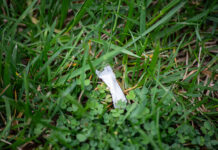Some students may find themselves experiencing overwhelming feelings regarding their schedules and the cold weather. This concept can lead to a type of depression psychologists call Seasonal Affective Disorder (SAD).
Stemming from depression, SAD is described as feelings of depression influenced by changing seasons, according to Dr. Jason Braun, assistant professor and licensed psychologist at Slippery Rock University.
“SAD manifests during certain times of the year,” Braun said. “Typically you’re going to see it in the winter months where the light is less.”
Braun explained how some suffer from symptoms of depression that can appear gradually or come all at once, but SAD is most commonly seen during the fall and winter months. He added the symptoms could also arise in spring or summer months.
Braun had first heard about and considered Seasonal Affective Disorder in one of his doctorate classes during college.
“I thought it made sense,” he said. “Anecdotally, we all notice a change in the weather and light and how it affects our mood and energy. From a personal level someone could definitely see where that might be impactful.”
Braun also explained how a distinction must first be made in discovering whether or not Seasonal Affective Disorder could be the cause of a student’s feelings associated with depression.
“We kind of become aware of when their symptoms of depression emerge,” he said. “We look for a pattern of when they start and when they stop. There is a general pattern to their symptoms versus someone who has some other form of depression.”
According to Braun, treatments used to help patients with SAD include creating a game plan before the seasonal depression feelings sink in. He also added that staying active is very important.
Braun added that daily routine can be a huge motivator when it comes to Seasonal Affective Disorder symptoms, such as paying attention to your light intake during the day and at night time.
“It may not be enough to have just one light on,” he said. “When you’re working at night be aware of how much light is in your room. You might need to brighten up the room and help your body with circadian rhythms and putting yourself in a better mood.”
Braun suggested certain methods for someone with frequent or critical SAD.
“Some folks may experience more severe symptoms including anything from fatigue, lack of interest in normal activities, social withdrawal, craving foods high in carbohydrates, and weight gain,” Braun said.
He said these patients may want to consider a medication for the duration of a particular season as prescribed by their doctor.
Assistant professor and licensed psychologist at SRU, Dr. Melissa Nard, agreed with Braun’s suggested lifestyle improvement options for those experiencing Seasonal Affective Disorder.
Nard explained her thoughts concerning SAD and her initial and personal experiences in hearing about the disorder.
“The weather certainly affects my mood,” Nard said. “When it’s dark and cold, I generally have less energy than when the weather is beautiful. I had noticed the same thing in people around me.”
Nard explained how certain treatments can help to stimulate SAD patients’ bodies and how their bodies respond to these treatments.
“One of the best treatments for SAD is light therapy,” Nard said. “This is done using a special light that replicatessunlight.”
She said if the light therapy option is not possible, she recommends students getting outside during the middle part of the day when it’s brightest.
“Exercise can also help in increasing endorphins and is very effective at improving mood,” Nard said. “In addition to those treatments, counseling and medication can be helpful.”
Nard also explained how common Seasonal Affective Disorder can be and which individuals are usually more prone to the disorder.
“There is a higher rate of SAD in areas that are colder and darker,” she said. “And more women than men are diagnosed with the disorder.”
According to Dr. Braun and Dr. Nard, most people may not be aware of Seasonal Affective Disorder symptoms. They suggest that individuals experiencing SAD symptoms should follow their seasonal coping treatments or seek medical attention.
The Counseling Center located in Rhoads Hall can also be an accessible resource on campus for students to seek therapy for SAD or any other stressors.
Their hours are 8:00 a.m. to 4:30 p.m. Monday through Friday, or students can call for an appointment.







